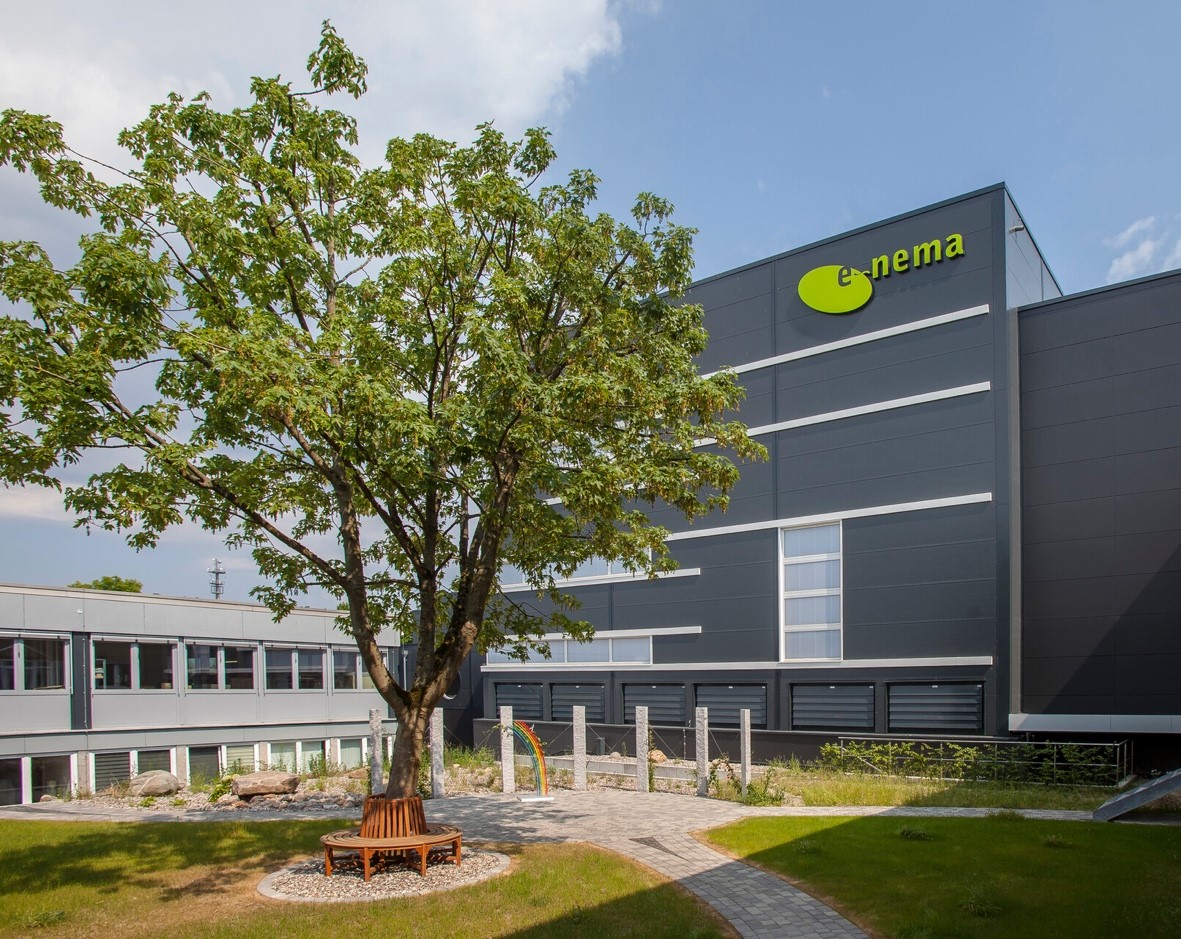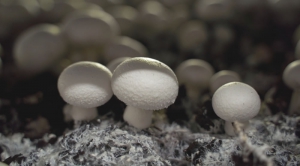
Mushroom Matter
Welcome on our platform. Why MUSHROOM MATTER? Because mushrooms play an important role in our lives as well in business. Our goal is to bring the world the very latest mushroom news with the upmost care to support the positioning of our beloved Mushroom.
Powerfogger 60 Champignon
The user-friendly Powerfogger 60 Champignon has been specially developed for the disinfection of mushroom cultivation chambers.
• Very effective for indoor disinfection
• Ideal for fly control
Characteristics
This robust device makes it possible to dis- infect chambers quickly one after another with only one tank fill. The unique fogger disperses very fine droplets, which spread evenly and quickly. The droplets contain a high quantity of agent and little water, so a lot of active substance can be applied with a minimal water consumption.
Technical data
Power: 1,5 kW electric motor
Fluid tank capacity: 60 l (fully emptied) Output: approx. 25 l/h
Effective fog range: 60–80 m Adjustable droplet size: 10–20 µm Mechanical steering clock.
Which factors determine the pH value?
My previous blog described what the pH should do during the composting process. This blog examines the role of the raw materials, such as ammonium sulphate, gypsum and water.
The Ukraine grew about 70,000 tons of mushrooms and about 350 mushroom, oyster farms in 2021.
Due to the Russian invasion and in several cases, rockets hitting mushroom complexes and causing partial destruction, about half of the mushroom farms were forced to stop. Ukrainian mushroom growers that stayed behind, continue to harvest where possible and support the army and the population.
Compost production
Of the seven largest composting plants in Ukraine, two ceased operations altogether and were forced to evacuate staff. Five others stopped producing new batches immediately after the fighting began, and in some cases disposed of what was already in production. Thus, the composting plants, which are still working, have the opportunity to ship compost for another week or two.
Peat
Peat for mushroom growing has become a particular problem, as the main deposits of peat, and, accordingly, the production of so-called "casing soil" are in the north of the country, where the situation is very turbulent. Therefore, most of the casing soil production stopped shipping from the first days of hostilities. As of March 15, it is known that some of them have started offering peat, but the situation remains unstable.
Logistics
Mushroom farms and compost production reported that the cost of delivery of peat, compost and mushrooms increased by 2-3 times. In addition, it is difficult to find transport, and a significant number of regions remain almost inaccessible for delivery there and there.
Mushroom farms
About half of the mushroom farms have completely shut down, in many cases simply by turning off the lights and evacuating. Other farms, in areas where the situation was calmer (often this means that missiles and fighters fly directly over the roofs, but do not drop bombs directly in the village), continued to harvest. Much, or even all, of farmers hand over their products to the army or as humanitarian aid to the population.
Source and for more information:
Maksym Yenchenko Mushroom Information Agency "UMDIS"
Telephone: +380-67-506-45-21
Email: This email address is being protected from spambots. You need JavaScript enabled to view it.
Website: www.umdis.org
Photo: from the Rio Champignon Facebook page
TenCate Toptex® Straw Cover
TenCate Nicolon nets (Tunnel-glide-growing nets) are known worldwide for its performance and reliability and became the standard for the mushroom composting and mushroom growing industry.
Besides the nets, TenCate produces TenCate Toptex® Straw Cover, the essential cover to protect your expensive straw and keep the high quality.
The main component of mushroom substrate/compost is wheat straw. Structure is one of the properties that straw brings to the compost and it also creates a water buffer. Due to the composting process the waxy layer surrounding the straw is removed and the straw is able to absorb water.
Thanks to its continuous fibers, the TenCate Toptex® fleece offers a very low water absorption capacity. Coupled with very fast drainage of rainwater and its enormously high air permeability, this fleece stands out as a permanently reliable and proven storage method. The protective fleece can be used on both sides. The UV and thermal stabilizers contained in the fleece keep it durable for many years, even under high solar radiation. A service life of over 10 years is not uncommon with careful handling. When covering, it is important to ensure optimum tensioning – the fleece must be tightly tensioned at all times.
TenCate Toptex® protection fabric protects straw bales reliably against wind and rain, providing effective respiration. The high quality of the straw is preserved throughout the whole winter season, drying off after heavy rainfall, and the development of mould is avoided.
THE BENEFITS OF TENCATE TOPTEX® (More information at www.toptex.eu)
- Permeable to air and vapour (avoids mould development)
- Water shedding (drains off water at slope angles >45°)
- Resistant to wind lifting, the straw dries off even after heavy rainfallHigh tensile strength and tear resistance (withstands even strong winds)
- UV stable
You can also watch their video here.
Gentle on the Planet
Stakeholders across the food product supply chain are increasingly interested in understanding the environmental effects of food production. Mushrooms have a unique growing process unlike any other produce item and are considered “one of the most sustainably produced foods in the United States1.” Consider this:
- They are grown in the absence of sunlight in a climate-controlled environment.1
- One pound of production requires only 1.8 gallons of water; 1.0 kilowatt hours of energy; generates only .7 pounds of CO2 equivalent emissions.1
- Up to 1 million pounds produced on just 1 acre.1
A 2018 study2 published in the International Journal of Life Cycle Assessment looked at the cradle-to-gate life cycle environmental impacts of mushroom production in the United States from cultivation to harvest and preparation for bulk packaging. The goal was to create a “baseline” estimate of energy use, global warming potential (GWP), water use, and other common environmental impacts.
Please read the full article here.
MUSHROOMS could be the "missing link" in bridging Australia's food nutrition gaps.
Nutrition Research Australia (NRAUS) is looking to identify nutrition issues within the Australian food industry's food service sector, and use mushrooms to help out.
The three-year research project is managed by the Australian Mushroom Growers Association and funded by Hort Innovation.
NRAUS chief executive officer Dr Flavia Fayet-Moore said the mushrooms have special nutritional and culinary properties, which make them valuable commodities in the nation's food supply.
Please read the full article here.
Nearly 10 years ago, local mushroom farmer Murray Good approached engineering professor Mehrdad R. Kermani with a challenge. Could Kermani and his team develop an autonomous mushroom harvesting robot to address the labor shortage Good and mushroom farmers around the world were facing?
Kermani, a world leader in the field of safe human-robot interactions, knew this was a challenging problem that could take time. With patience, perseverance and the help of his graduate students, he developed the prototype for what is now the first commercialized robotic harvesting system of its kind.
"When we first started the project, we had no specific data or approaches to reference," Kermani said. "We basically started from scratch."
Kermani succeeded where several research institutes and private companies worldwide failed, designing a robot that could pick mushrooms at a speed and quality comparable to or beyond human harvesters. He also took an innovative approach, developing a system that seamlessly integrates into the existing infrastructure of mushroom farms across North America.
Please read the article here.
New employee at e-nema
e-nema GmbH is a successful company and market leader in the production of nematodes and represents the biological alternative to chemical insect control. Therefore e-nema combines cutting-edge technology and biological crop protection, always with the aim of making the world a better place.
An international team works in the company's laboratories, on continually improving processes and products as well as developing new ideas and solutions for plant protection, aquaculture and in biocatalysis, the 'white' biotechnology. They are based in Schwentinental, Germany. In order to further strenghten their position in the worldwide mushroom market they decided to invest in marketing by creating a position for a dedicated marketing manager. Mads Wollesen was hired in January to take up this position.
Mads is quite new to the mushroom business, but an old hand, when it comes to marketing. With a masters degree and several years of working experience in an online marketing agency, his biggest motivation is to help e-nema to optimize all their communication and marketing activities to establish and further expand its position as a global player in the production of biological plant protection.
„I am very excited to be here at e-nema and extremely motivated to dedicate my workforce to push biological plant protection solutions all over the world. I have already gathered some impressions about the global mushroom industry and can't wait to spread my roots there. e-nema is very science-driven and has many stories to tell. My task now will be to bring them out into the world.“
Mads Wollesen
Marketing Manager
Tel +49 (0)4307 8295-293
E-mail This email address is being protected from spambots. You need JavaScript enabled to view it.
Website: www.e-nema.de




























